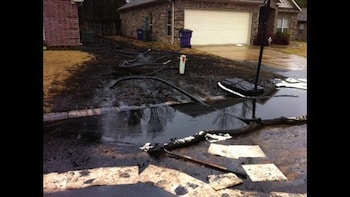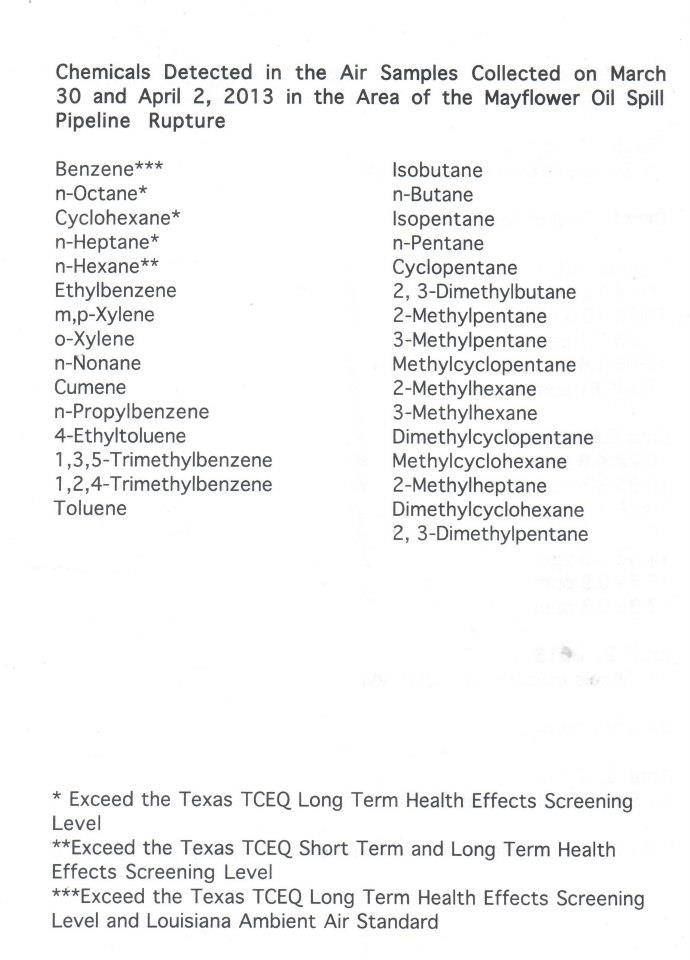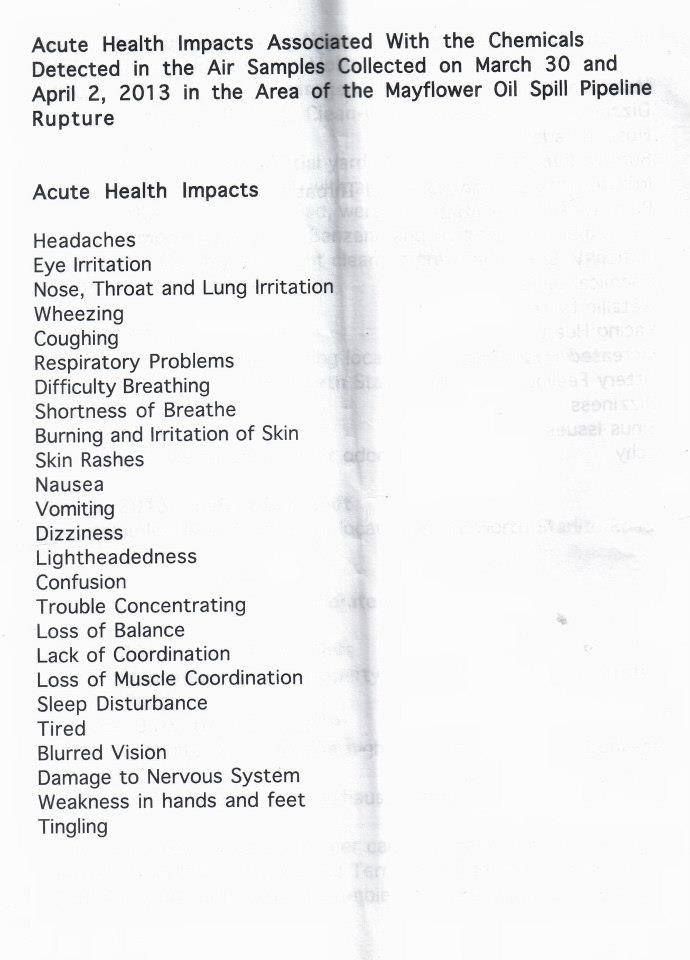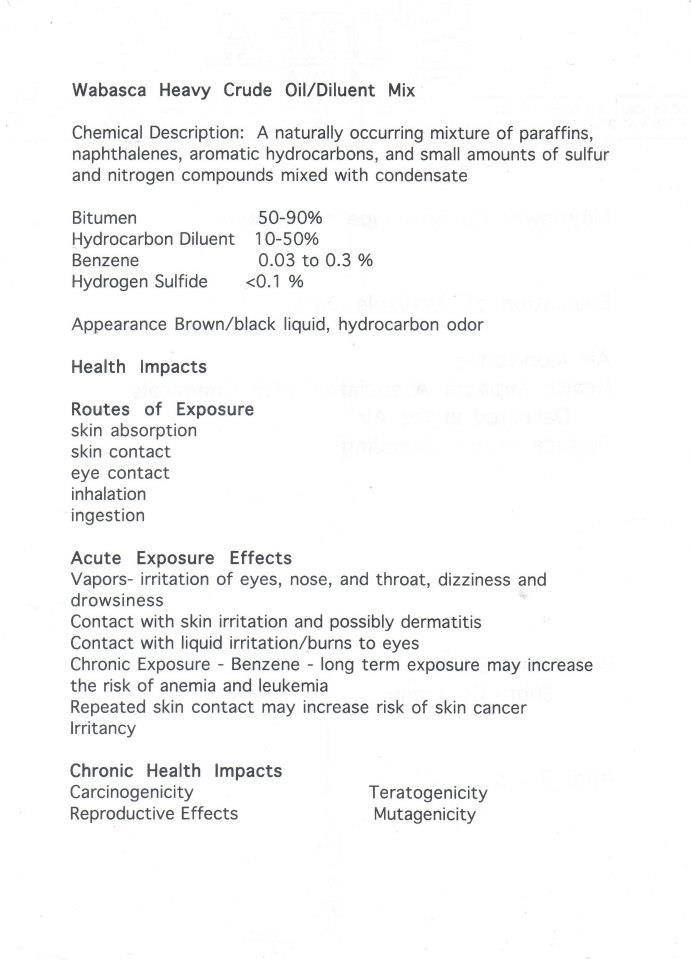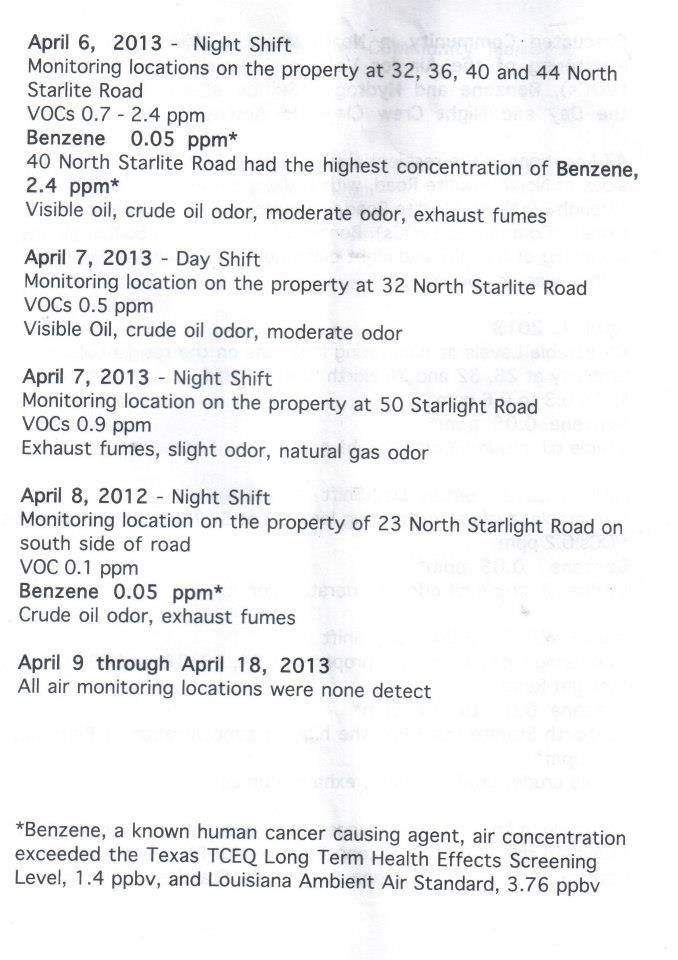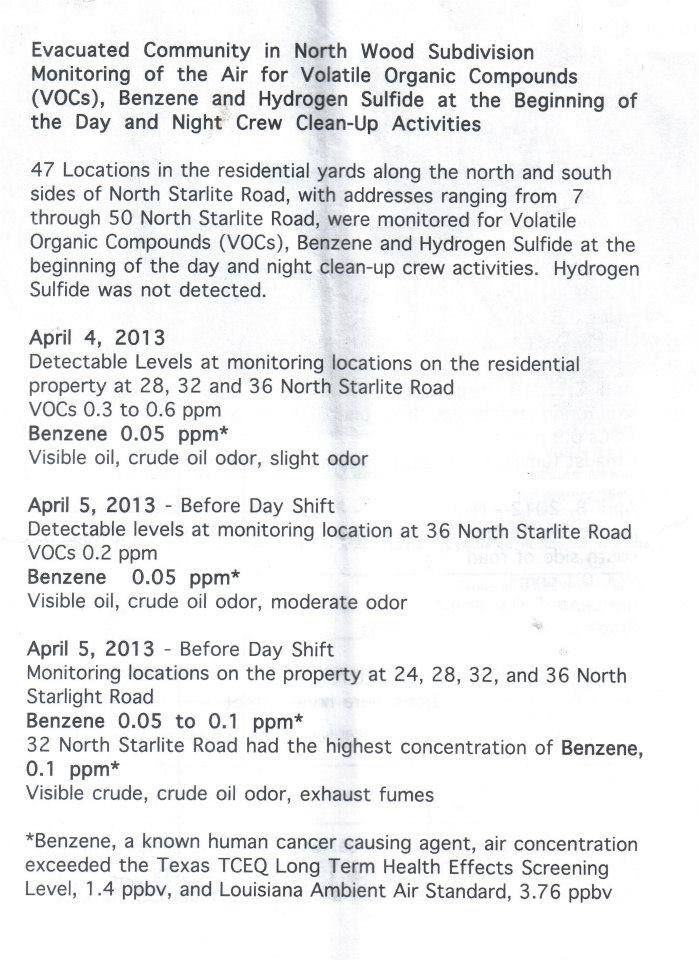Nearly six months have passed since ExxonMobil’s Pegasus tar sands pipeline ruptured and released as much as 7,000 barrels of diluted bitumen into Mayflower, Arkansas. And as soon as the company realized that they had a problem, the cover up began.
From the outset, there has been a clear effort on behalf of Exxon to mislead and deceive the public about the effects that the tar sands spill will have on both the environment and public health. As a result, the population in Mayflower is suffering at an unprecedented rate from mystery illnesses that can be linked back to exposure to tar sands crude.
Just like BP during the Deepwater Horizon oil gusher, Exxon attempted to deceive the public about how much oil had actually been spilled. The company claimed that the amount was somewhere between 3,000 and 4,000 barrels. But a report by Inside Climate News, based on numbers from the U.S. EPA, said that the actual number was closer to 7,000 barrels. However, the EPA refused to correct Exxon’s numbers and did not include the agency’s own estimates in their press releases, instead choosing to parrot the bogus numbers asserted by Exxon.
That was just the beginning of Exxon’s plan to mislead both the public and the federal government. The major problem the company knew it would face would be the health impacts on residents, so Exxon has done everything in its power to prevent the truth from leaking out. (Those kinds of leaks are easier to prevent.)
During the cleanup process, Exxon employees removed tar sands oil, soil, and other oil-stained environmental elements from Mayflower, and immediately shipped them off to their private facilities. Doing so effectively prevented federal regulators from gathering samples and running tests to determine what types of toxic materials had been released.
Arkansas attorney general Dustin McDaniel filed a lawsuit against the company, declaring that Exxon’s removal of the debris and refusal to let regulators in was “illegal.” However, Exxon recently filed a motion to dismiss the suit, and as of now, the toxic debris that the company removed remains in lockdown.
But even with the physical evidence removed, there were still plenty of independent tests done in the early days of the spill that give us a clear picture of what was plaguing the residents of Mayflower.
From CleanTechnica, via Raw Story:
In the days after the pipe rupture, air monitoring tests show that the surrounding neighborhood showed dangerous levels of benzene and possibly harmful levels of octane, cyclohexane, heptane, and hexane, along with detectible levels of toluene, butane, pentane, and several other industrial chemicals. Some sources claim that it’s impossible, at this point, to say how much of what spilled were these polyaromatic hydrocarbons, but even conservative estimates would place the number in the tens of thousands of gallons of poison in the town’s air.
With that kind of evidence, it would be understandable for the government to issue evacuation orders for residents. But that is not what happened. In fact, the government, together with Exxon, told Mayflower residents that there was absolutely nothing to worry about, and that their own air quality tests couldn’t find any health hazards.
And that is the story that Exxon wanted the world to hear. But inside the town of Mayflower, it was a different story altogether. The public was – and still is – getting very sick, and all signs point to the Pegasus tar sands crude as the culprit.
I’ve been in contact with Mayflower resident Ann Jarrell, who has been leading the fight to hold Exxon accountable and to expose the cover-up taking place. She informed me of the flip-flopping that has been going on regarding the dangerous chemicals that were released into the air, and directed me to information that was given to residents at the first town hall meeting immediately following the oil spill.
The images below show documents that were handed out, informing residents of the toxic chemicals that they were breathing, as well as the health problems that had been reported (images are from The Mayflower Oil Spill Diaries Facebook page):
As the last image shows, workers reported dangerous levels of benzene, a known carcinogen. In spite of this knowledge, residents, including Jarrell, were told that there was nothing they needed to worry about, and evacuating the area was certainly not necessary.
Here is what happened to Jarrell when she contacted local authorities in the immediate hours following the pipeline rupture, from communications that I have had with her:
“They held the first Mayflower Town Hall Meeting along with the Earth Day program. That was the first time I had heard that what we had been breathing in since March 29, the day of the oil disaster, until April 22nd, date of the first meeting, was actually toxic fumes. I had spoken with an Exxon employee that told me the smell that was causing nausea and headaches would go away in a few days and it would not hurt us, so we stayed, until the day of the meeting. My daughter had just had her baby, Logan, on December 11, 2012 and came home from the hospital to live with me for a while so I could help her and my new grandson. Jennifer called me the afternoon of the 29th and told me there were police and fire trucks and sirens going off and I needed to get home.
By the time I arrived home she was busy packing up her stuff and Logan’s stuff and told me to grab a bag and pack up because we needed to get out of the area. I asked if someone had told her to evacuate, and she said no, but they were taught in school that if you can see it, feel it, smell it, you need to leave the area. I called the Mayflower police department and asked them if we needed to evacuate, and the young man on the phone asked me if we had oil on our land. I told him no, but the smell was terrible and we had headaches and were nauseous. He told me that the smell was just something they put in the pipeline so they could tell if it started leaking and he assured me that it was not natural gas and we did not need to evacuate, so we stayed.
On April 22nd when I saw the report they handed out that showed all the toxic chemicals that we were being exposed to and the symptoms they caused, I started crying and immediately called my daughter and told her she was right, we should have left that first day. I told her to pack up her and the baby and go live with my son, her brother and to get out of my house as fast as she could so her and Logan have been out of the area since then. But during those 3 weeks Jen and Logan had been breathing in the toxic fumes 24/7, while I at least got away when I went to work.”
But it doesn’t end there. Ann Jarrell told me that Exxon’s tentacles could also be at work keeping doctors silent about the lingering health affects. Again, from my communications with Ann:
“I heard from one of the people at one of the first meetings that a nurse that worked at a hospital had told them that Exxon had sent a memo, or talked with the doctors, or somehow relayed the information that if any resident of Mayflower showed up with sickness, to NOT notate that it had anything to do with the oil spill. Evidence of this was clear when a couple went to the ER and the husband told the doctor that he was from Mayflower and had been breathing in the toxic fumes and he was very sick and had even passed out once. The doctor did not give him any medications and told him he probably had allergies or something and sent him on his way. Meanwhile his wife was also seeking treatment at the same ER and did not mention the Mayflower Oil spill and was diagnosed with breathing problems, possibly asthma and was given several prescriptions, for inhalers, antibiotics, etc.
We have tried to find someone to confirm that they had been told to not write cause of illness as the Mayflower Oil spill, but have not been able to verify this, even though through our experiences, we believe it to be true.”
While it is difficult to confirm with certainty that doctors have been silenced by Exxon, it is not an unprecedented move. As we saw recently in areas that have been poisoned by fracking, doctors were put under gag orders by the dirty energy industry and those who were sickened by industry activity had been offered hush money. So it is entirely possible and plausible that doctors are doing the bidding of Exxon by keeping the situation quiet.
People in Mayflower, Arkansas need help, and Exxon is acting as uncooperative as possible. They understand that full exposure of what happened as a result of their tar sands spill will undoubtedly endanger the future of pipelines all over the country, thus ending a lucrative source of income for the oil industry.
One thing is perfectly clear – the residents of Mayflower may be suffering, but they are still fighting the battle to hold Exxon accountable.
Subscribe to our newsletter
Stay up to date with DeSmog news and alerts


